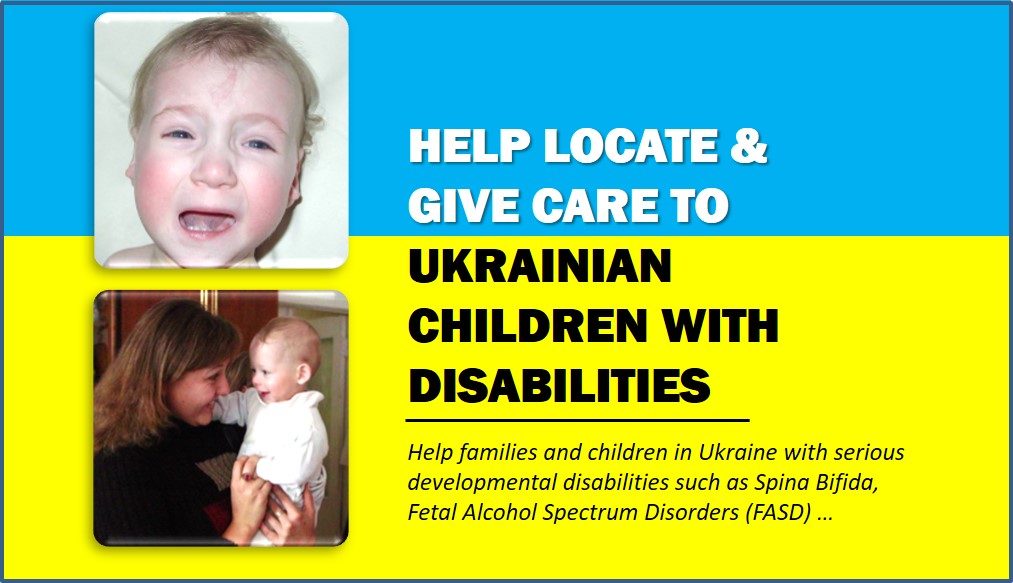See Preconception Health
Pregnancy Risks and Advanced Maternal Age
Medical Genetics, University of South Alabama.
Women approaching or beyond the age of 35 have a greater chance than younger women of having a baby with a chromosome abnormality ...
Folic Acid & Pregnancy
Policy Statement from the American College of Medical Genetics ...
Ask NOAH About Pregnancy: Fertility, Infertility & Surrogacy
NOAH, May 30, 2007
Fertility enhancement ... Male infertility ...
Pregnancy loss
March of Dimes, 2007
Miscarriage ...
Women with Disabilities: Bibliography
Motherhood and Reproductive Rights ...
Adolescent Pregnancy
Committee on Adolescence, American Academy of Pediatrics, February 1999
Adolescent pregnancy in the United States continues to be a complex and perplexing issue for families, health care professionals, educators, government officials, and youth themselves. The percentage of American adolescents who are sexually active has increased significantly in recent years .Currently, 56% of girls and 73% of boys have had sexual intercourse before 18 years of age. There are several predictors of sexual intercourse during the early adolescent years, including early pubertal development, a history of sexual abuse, poverty, the lack of attentive and nurturing parents ...
Pregnancy After Age 35
March of Dimes, January 2006
Most women over age 35 have healthy pregnancies and healthy babies. However, recent studies suggest that women who postpone childbearing do face some special risks. Since the late 1970s, birth rates for women in their late 30s and 40s have increased dramatically. According to the National Center for Health Statistics, between 1978 and 1997, the birth rate rose 90 percent for women age 35 to 39. Between 1981 and 1997, the rate increased 87 percent for women in their 40s ... How much does age affect fertility? ... have some decrease in fertility ... How do preexisting health problems affect pregnancy? ... At any age, a woman should consult her health care provider before attempting to conceive ... A 1996 Mount Sinai study found that women age 40 and older were almost three times as likely to develop diabetes, and almost twice as likely to develop high blood pressure as women in their 20s ... What is the risk of birth defects in babies of women over 35? ... The risk of bearing a child with certain chromosomal disorders increases as a woman ages ... At age 25, a woman has a 1-in-1250 chance of having a baby with Down syndrome; at age 30, a 1-in-952 chance; at age 35, a 1-in-378 chance; at age 40, a 1-in-106 chance; and at 45, a 1-in-30 chance ... What is the risk of miscarriage as a woman gets older? ... Most miscarriages occur in the first trimester for women of all ages. The rate of miscarriage in older women is significantly greater than that in younger women. Studies estimate that this risk is about 12 to 15 percent of recognized pregnancies for women in their 20s and rises to about 25 percent at age 40 ... Does the risk of pregnancy complications and adverse pregnancy outcomes increase after age 35? ... While women in their late 30s and 40s are very likely to have a healthy baby, they do face more complications along the way ... Do women over 35 have more problems in labor and delivery? ... First-time mothers over 35 are more likely than women in their 20s to have difficulties in labor ... How can a pregnant woman reduce her risks? ... Take a multivitamin containing 400 micrograms of the B vitamin folic acid daily before and early in pregnancy to help prevent certain birth defects of the brain and spinal cord. (This applies to all women of childbearing age.) ... Have a pre-pregnancy medical check-up and obtain early and regular pre-natal care during pregnancy ... Don’t drink alcoholic beverages ... Don’t smoke during pregnancy ...
Maternal Age and Birth Outcomes: Data from New Jersey
Nancy E. Reichman et al., Family Planning Perspectives, Volume 29, No. 6, November/December 1997
 [for Professionals mainly] [for Professionals mainly]
the youngest (younger than 15) and oldest (aged 40 and older) mothers being at higher risk than 25–29-year-olds ... The multivariate analysis also showed that newborn hospitalization costs increased with maternal age among both blacks and whites ... The results indicate that teenagers younger than 15 have the highest risk of delivering a low-birth-weight infant relative to 25-29-year-olds, closely followed by mothers 40 and older ...
Herpes genital
March of Dimes, March 2005
 [Spanish] [Spanish]
Juvenile Diabetes Foundation International
The Diabetes Research Foundation, 2007
Diabetes
IRSC, 2002
American Diabetes Association
CDC's Diabetes & Public Health Resource
Centers for Disease Control and Prevention, June 27, 2007
Diabetes Translation Program ... Impact of Diabetes ...
Understanding Gestational Diabetes
A Practical Guide to a Healthy Pregnancy ...
Diabetes Monitor : Planning a pregnancy
If a young woman with diabetes (or previous gestational diabetes) is planning a pregnancy soon, there's a list of things to do. Here's the advice I give my patients ... Tighten up your targets ... Do more blood sugars ... Plan on lots of shots ... Start telephoning ... Talk to a dietitian ...
Guide to Type 1 (Insulin-dependent) Diabetes
International Diabetes Federation, 1998
Pregnancy and Contraception ...
Gestational Diabetes: Nutrition and Questions
Women with gd are often given a plan as if it is "The Ten commandments" written in stone, and are shocked when they compare their plan with others' and see some of the differences. The similarities generally outweigh the differences ...
La diabetes durante el embarazo
March of Dimes, September 2006
 [Spanish] [Spanish]
Intolerancia de Rh
 [Spanish] [Spanish]
La intolerancia de Rh de los neonatos ocurre cuando existe una falta de compatibilidad entre la sangre de la madre y la de su feto ... La mayorнa de la gente tiene sangre de factor Rh-Positivo ... Esto significa que producen el factor Rh, una proteina hereditaria que se encuentra en la superficie de sus glуbulos rojos. Alrededor del 15 por ciento de los individuos de raza blanca y el 7 por ciento de los de raza afroamericana carecen del factor Rh y son considerados Rh-negativos ...
Antenatal and Neonatal protection of the Infant
Jacob Sobel, M.D. Archives of Pediatrics 43:448-465, 1926 ...
Prenatal Genetic Diagnosis
Committee on Genetics, American Academy of Pediatrics, June 1994
 [for Professionals mainly] [for Professionals mainly]
Prenatal Diagnosis
The Internet Pathology Laboratory Web Path
... Ultrasonography ... Amniocentesis ... Chorionic Villus Sampling (CVS) ... Maternal blood sampling for fetal blood cells ... Maternal serum alpha-fetoprotein (MSAFP) ... Maternal serum beta-HCG ... Maternal serum estriol ... Techniques for Pathologic Examination ...
Ultrasonido
March of Dimes, January 2007
 [Spanish] [Spanish]
El ultrasonido es una tйcnica que utiliza ondas sonoras para tomar imбgenes del bebй (feto) dentro del ъtero. Debido a que utiliza ondas sonoras en lugar de radiaciones, el ultrasonido es mбs seguro que los rayos X ...
Amniocentesis
March of Dimes, June 2007
 [Spanish] [Spanish]
Use of age as a threshold for recommending prenatal diagnosis is questioned
Age increases a woman's risk of having a child with a genetic disorder such as Down syndrome. The authors of a recent commentary call for eliminating strict age- or risk-based cutpoints for prenatal diagnosis in favor of the preferences of well-informed women. However, today there are 268 cytogenetic labs that can detect chromosomal abnormalities, and there are 500 board-certified cytogeneticists in the United States ... A woman's risk of giving birth to a child with Down syndrome show that the risk increases substantially among women in their early to mid-30s, but it does not spike suddenly at 35 years of age. In addition, the age 35 cutoff was chosen because that is when the risk that a woman will have a miscarriage after the procedure is about equal to the probability that she is carrying a fetus affected by a chromosomal abnormality ... women's preferences showed that most women (83 percent) would prefer having a procedure-related miscarriage to giving birth to a child with Down syndrome.
SCREENING PREGNANCIES
Pregnancy " Triple Test "
Pregnant women are routinely offered a blood test called a triple test ... This test is also known as: Triple Screen, AFP Plus, Multiple Marker Test, or Prenatal Risk Profile Test ... mainly used to identify pregnancies which may be at increased risk for: Down syndrome, Neural tube defects NTD (spina bifida or anencephaly), Other birth defects. Abnormal results must be confirmed by a diagnostic test (amniocentesis) combined with a high resolution ultrasound performed by an expert in birth defects and laboratory studies of the amniotic fluid and cells including chromosome studies.
What Does the Triple Screen Measure?
March of Dimes, January 2007
Examen selectivo de alfafetoproteinas
March of Dimes.
 [Spanish] [Spanish]
La mayoria de los proveedores de atencion de salud ahora ofrecen rutinariamente a sus pacientes embarazadas un analisis de sangre llamado la prueba de examen selectivo de alfafetoproteinas sericas maternas (MSAFP, maternal serum alpha-fetoprotein screening test). Esta prueba identifica los embarazos en un riesgo mayor de lo promedio de ciertos defectos congenitos graves, como la espina bifida (espina dorsal abierta) y el sindrome de Down (rasgos faciales caracteristicos, retraso mental y posibles defectos del corazon y otros problemas) ... ?Que es la alfafetoproteina?
Triple-Test - Was ist das?
Dr. med. A. Fechtig, Deutsches Medizin-Netz, January 9, 2006
 [German] [German]
Der Triple-Test ist eine Untersuchung des Blutes der werdenden Mutter. Er wird zwischen der 15. und 20. Schwangerschaftswoche (ublicherweise 16.-17. Schwangerschaftswoche) durchgefuhrt und beinhaltet die Bestimmung von 3 Hormonen im Blut der Mutter: alpha-Fetoprotein (AFP), freies Estriol (E3), beta-Choriongonadotropin (beta-HCG) ...
Le triple test
January 15, 2001
 [French] [French]
Qu'est ce que c'est ?
Prenatal Screening and Diagnosis for Down Syndrome Prevention
Paul Dick, MDCM, FRCPC, Department of Pediatrics, University of Toronto
 [for Professionals mainly] [for Professionals mainly]
In 1979 the Canadian Task Force ... reviewed the evidence for prenatal diagnosis of Down Syndrome (DS) and concluded that there was fair evidence to offer amniocentesis to pregnant women from high-risk groups, including parents with translocation of chromosome 2 1, a family history of DS, or maternal age over 35 years ...
Prenatal Screenings
©1999 March of Dimes Birth Defects Foundation ... Amniocentesis ... Chorionic Villus Sampling (CVS) ... Maternal Blood Screening ... Ultrasound ...
Chorionic Villus Sampling and Amniocentesis: Recommendations for Prenatal Counseling (and Limb Deficiencies)
Richard S. Olney, M.D., M.P.H., et al., MMWR 44(RR-9);1-12, July 21 1995
CDC ... Chorionic villus sampling (CVS) and amniocentesis are prenatal diagnostic procedures that are performed to detect fetal abnormalities ... CVS can cause transverse limb deficiencies ... are associated with the timing of CVS ... Use of CVS and Amniocentesis ... Limb deficiencies among infants whose mothers underwent ... Possible mechanisms of CVS-associated limb deficiency ...
Syndromes Detectable in Fetuses
theFetus.net
Aicardi's syndrome ... Apert syndrome ... Fetal alcohol syndrome ... Fetal Hydantoin Syndrome ... Fetal Rubella syndrome ... Holt-Oram syndrome ...
Fetal Aneuploidies
theFetus.net
45,X/47,XYY mosaicism ... 45,X/47,XY mosaicism ... Monosomy X (Turner) Syndrome ... The ultrasound detection of chromosomal anomalies ...
Fetal Therapy-Ethical Considerations
Committee on Bioethics, American Academy of Pediatrics, 1999
Decisions by pregnant women concerning fetal diagnostic and therapeutic interventions clearly involve considerations as to what is best for the fetus. These decisions also involve the woman's interest in her own health and freedom from unwanted invasion of her body because all diagnostic and therapeutic interventions on behalf of a fetus necessarily affect the pregnant woman and require her direct participation. Thus, fetal therapy poses a potential conflict between the pregnant woman's own best interests, and her (and others') perception of the best interests of her fetus.
The Center for Fetal Diagnosis and Treatment
Children's Hospital of Philadelphia, 2007
Fetal Diagnoses ... Treatment ... Transplant ...
The University of California San Francisco Fetal Treatment Center Overview
The Fetal Treatment Center, 2007
... corrective fetal surgery ... 18th through the 30th week ... congenital diaphragmatic hernia, cystic adenomatoid malformations of the lung, urinary tract obstructions, and sacrococcygeal teratoma, and fetal anomalies ...
Overview of Fetal-Placental Abnormalities
Internet Pathology Laboratory Web Path
Chromosomal Abnormalities ...
Muestra del villus coriуnico (CVS)
March of Dimes, April 2007
 [Spanish] [Spanish]
їA quiйnes se les ofrece la prueba de CVS?
Image Library
OBGYN.net, 2007
Fetal Anomalies ... Twin-Twin TransfusionSyndrome ... Bilateral Cleft Lib ... Lateral Cleft Lip ... Small Omphalocele ... Large Omphalocele ...
Fetal abnormalities diagnosable by ultrasound
Joseph Woo, Obstetric Ultrasound: A Comprehensive Guide
Achondroplasia ... Acondrogenesis ... Anencephaly (1) ... Beckwith-Weidemann syndrome ...
American Society of Human Genetics Policy Statement for Maternal Serum Alpha-Fetoprotein Screening Programs and Quality Control for Laboratories Performing Maternal Serum & Amniotic Fluid Alpha-Fetoprotein Assays
American Journal of Human Genetics 40:7-82, 1987.
MSAFP values are used primarily but not solely to predict occurrence of open neural tube defects in the ferus; their use for prediction of Down syndrome is a new initiative under investigation. The test is a good one, as far as such a test can be, but it is imperfect, because false-negative and false-positive results both occur. In other words, it is not an infallible test ...
Update on MSAFP Policy Statement from The American Society of Human Genetics
Kenneth L. Garver, Department of Medical Genetics, Western Pennsylvania Hospital, Pittsburg. Received April 25, 1989 ...
ACMG Position Statement on Multiple Marker Screening in Women 35 and Older
American College of Medical Genetics, 1994
Maternal age (MA) has been an accepted screening method for Down syndrome (DS) for at least 20 years ... This committee recommends that serum analyte screening should be offered to all pregnant women who are less than 35 years unless their history suggests amniocentesis is indicated.
Statement on Guidance for Genetic Counseling in Advanced Paternal Age
American College of Medical Genetics, 1996
There is no clear accepted definition of advanced paternal age. A frequently used criterion is any male, age 40 years or older at the time of conception, as opposed to the current population mean paternal age of 27 years. The risk for genetic defects does not increase dramatically at age 40, but rather increases linearly with age. Some studies have suggested that the risk of genetic defects, specifically, sporadic dominant single-gene mutations, is 4-5 times greater for fathers aged 45 and above than for their 20-25 year old counterparts ...
Statement on Multiple Marker Screening in Pregnant Women
American College of Medical Genetics, 1996
Two years ago a position concerning Multiple Marker (MM) Maternal Serum (MS) screening in women age 35 and older at estimated delivery date was published by the Board of the American College of Medical Genetics. (1) This addendum to the initial statement reviews a) those previous recommendations, b) the selection of age-equivalent risk cut-off levels for MS screening, and c) whether routine MS alpha fetoprotein (MSAFP) screening is appropriate in addition to amniocentesis ...
Breast Cancer and Pregnancy
National Cancer Institute, Cancer Information Service
... Breast cancer is the most common cancer in pregnant and postpartum women ... About 1 in 3,000 pregnancies ... Cancer are typically detected at a later stage than in a nonpregnant ... To detect breast cancer, pregnant and lactating women should practice self-examination and undergo a breast examination as part of the routine prenatal examination by a doctor ... Staging of breast cancer should be modified to avoid radiation exposure to the fetus ... Nuclear scans cause fetal radiation exposure.
Welcome to the Pregnant with Cancer Support Group
Pregnant with Cancer Support Group, 2007
 [Support Groups] [Support Groups]
Smoking in Pregnancy
March of Dimes, November 2004
If all pregnant women in the U.S. stopped smoking, there would be an estimated 10% reduction in infant deaths, according to the U.S. Public Health Service ... A recent Danish study reported that women who smoke were about 30% less likely to conceive ... Women who smoke early in pregnancy double their risk of having an ectopic pregnancy ... Smokers are up to 80% more likely to suffer a miscarriage than their non-smoking counterparts ... Smoking nearly doubles a woman's risk of having a low weight baby ... Who weigh less than 5 1/2 pounds at birth ... Smoking during pregnancy may contribute to birth defects ... Increased risk of developing cleft lip and/or cleft palate ...
Alcohol Consumption Among Pregnant and Childbearing-Aged Women -- United States
Centers for Diesease Control and Prevention, MMWR 46(16);346-350 April 25 1997
… This report analyzes and compares data from the 1995 Behavioral Risk Factor Surveillance System (BRFSS) and previously reported 1991 BRFSS data for women aged 18-44 years (3), and presents the prevalence of alcohol consumption among pregnant women … A total of 33,585 women aged 18-44 years were interviewed … 4.7% of women aged 18-44 years reported being pregnant at the time of the interview. Of these, 16.3% reported any drinking during the preceding month, compared with 12.4% in 1991 … The rate of frequent drinking among pregnant women was approximately four times higher in 1995 than in 1991 (3.5% in 1995 and 0.8% in 1991, p less than 0.01) … Among all child bearing-aged women in 1995, 50.6% reported any drinking, and 12.6% reported frequent drinking …
Quй es Perinat?
Dra. Der Parsehian, May 6, 1998
 [Spanish] [Spanish]
lista de correo interdisciplinaria de alcance internacional, moderada y creada para profesionales mйdicos pediatras, neonatologos, obstetras, bioquнmicos, farmacйuticos, asistentes sociales, psicуlogos/as, investigadores, enfermeras/os. matronas, parteras u obstйtricas... en fin, todos los que de algъn modo u otro trabajan para y por una mejor salud materno-infantil...
Can the anthrax vaccine be taken by military members who are pregnant?
I.B.I.S. Birth Defects, May 2, 2002
________________________________________________________________________________________________
Last Updated: 2010/03/10
________________________________________________________________________________________________ | 


 [for Professionals mainly]
[for Professionals mainly]




